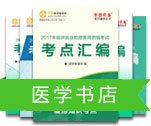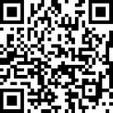| III. Physical Examination | III. 体格检查 |
A. A. General: mental status, temperature, hydration status,
pallor, or cyanosis.
B. Vital signs: tachycardia, bradycardia, irregularity, or
orthostatic hypotension.
C. Cardiovascular: heart sounds, murmurs, bruits, edema,
rales, and pulses.
D. Neurologic: cranial nerves, reflexes, strength and
sensation, tremor, Romberg's sign, gait, and cerebellar
signs | A. 一般检查:心理状态、体温、水合状况、苍白和发绀。
B. 生命体征:心动过速、心博徐缓、不规则及直立性低血压。
C. 心血管:心音、杂音、嘈声、水肿、罗音、脉博。
D. 神经性:颅内神经、反射、力度和感觉、震颤、Romberg’s体征、步态和脑部体征。 |
| IV. Testing | IV. 实验室检查 |
| A. Electrocardiogram (ECG) | A. 心电图(ECG) |
| The most important single initial test to evaluate syncope is the ECG; it is easy and inexpensive and can quickly identify life-threatening arrhythmias or ischemia. Although the diagnostic yield is only 5%, if the ECG is normal, ischemia, arrhythmias, and organic heart disease are very unlikely. If the ECG is abnormal but does not clearly demonstrate a likely cause for syncope (complete heart block or runs of ventricular tachycardia, for example), other tests are needed to clarify the underlying problem that may be related to the syncope. The result of the ECG, therefore, helps to direct the course of further workup. | 开始检查晕厥时最重要的单项初始实验室检查是ECG。这种方法简便价廉、可迅速识别对生命有威胁的心律不齐或局部缺血。虽然阳性诊断率仅5%,只要ECG正常,也基本能排除心肌局部缺血、心率不齐和器质性心脏病。如果ECG检查异常,但无法清楚地验证晕厥的潜在原因(如完全性传导阻滞或室性心动过速),就需要进行其他检查,以澄清与晕厥相关的潜在疾病。因此,ECG结果有助于指导进一步的检查。 |
| B. Cardiac monitors | B. 心脏监测 |
1. Holter monitor or telemetry performed for 24 hours. For patient with organic heart disease, this gives a diagnostic yield of from 2% for arrhythmias correlated to symptoms to 21% with unrelated arrhythmias. Extending this monitoring to 72 hours is not useful.
2. A loop event monitor is a portable, prolonged ambulatory event recorder indicating if there is recurrent syncope and no organic heart disease (yield = 24% to 47%). | 1. 进行24小时动态心电监测或远程监测。对器质性心脏病患者,这种检查能诊断2%的有症状心律失常和21%的无症状心律失常。将监测时间延长至72小时并无意义。
2. 记忆环心血管事件监测器是一种便携式、可长时间记录病人活动时心血管事件的装置,可以表明是否有复发性晕厥与器质性心脏病(诊断率为24%至47%)。 |
| C. Electrophysiologic studies. | C. 电生理检查 |
| This invasive cardiac monitoring and arrhythmia induction procedure gives a 50% diagnostic yield for those with organic heart disease or abnormal ECG (compared with 10% if no organic heart disease). This is considered the gold standard for arrhythmia diagnosis but it is expensive and invasive. Powerful predictors of a positive test are an ejection fraction less than 40%, bundle branch block, or atrial fibrillation. | 电生理检查是一种有创心脏监测与心律失常诱发手段,对器质性心脏病或ECG异常患者进行检查时,其诊断率为50%(无器质性心脏病患者的诊断率为10%)。它是心律失常诊断的金标准。只是价格贵,且是有创性的。对射血分数小于40%及束支传导阻滞或房性纤颤的阳性检查效果最好。 |
| D. Tilt table testing | D. 倾斜试验 |
| Tilt table testing is indicated for unexplained, recurrent syncope when arrhythmia or organic heart disease is excluded and neurocardiogenic syncope is suspected. In this setting, the sensitivity is 67% to 83% and specificity is 90%. | 在排除心律失常或器质性心脏病并怀疑有神经心源性晕厥时,就需要进行倾斜试验,以对不明因复发性晕厥作出诊断。此项检查的敏感性为67%~83%,特异性是90%。 |
| E. Echocardiogram and stress | E. 心脏超声和运动负荷试验 |
| Echocardiogram and stress tests are used only to evaluate exertional symptoms (echo first in this case) or suspected organic heart disease. | 心脏超声和运动负荷试验仅用于检查劳力性症状(首选超声)或可疑性器质性心脏病。 |
| F. Computed tomography | F. CT扫描。 |
| Computed tomography scan is used to evaluate focal neurologic signs. | CT扫描用于检查局灶性神经病学体征。 |
| G. Electroencephalogram | G. 脑电图(EEG) |
| Electroencephalogram is indicated for seizure activity only. | 脑电图仅用于癫痫发作情况检查。 |
| H. Carotid massage | H. 颈动脉按摩。 |
| Consider this if the patient is aged more than 60 years with unexplained syncope. Perform in the clinic if no bruits, ventricular tachycardia, recent stroke, or myocardial infarction. | 如病人年龄超过60岁并伴有不明因晕厥时可考虑此手法。如无心脏杂音、室性心动过速、新近中风或心梗,可在门诊进行。 |
| I. Blood tests | I. 血液检查。 |
| Blood tests, including hematocrit, serum chemistries, and pregnancy test, are not for screening; order only if a specific medical condition is suspected. | 血液检查包括血细胞比容、血清化学和妊娠检查。血液检查不用于筛检。仅在怀疑有特定疾病时使用。 |
| J. Psychiatric evaluation | J. 精神病检查。 |
| Psychiatric evaluation is useful in the setting of a high recurrence rate in a young patient without resultant injuries and no evidence of organic heart disease. | 若年轻患者晕厥复发率高且未导致损伤、无器质性心脏疾病时,作精神病学检查很有效。 |
| V. Diagnostic assessment | V. 诊断评估。 |
| The keys to the diagnosis of syncope are the history, physical examination, and ECG, yielding a diagnosis 45% of the time. The history and physical should focus on cardiac, neurologic, and medication-related issues. Directed testing can add 8% to diagnosis. Further classification by age and presence of organic heart disease can help focus evaluation and treatment. If organic heart disease is present or the ECG is abnormal, inpatient telemetry monitoring and electrophysiologic studies are recommended. If organic heart disease is not evident, ambulatory loop ECG and psychiatric evaluations are indicated, as well as possible tilt table testing. | 诊断晕厥的关键是病史、体格检查和ECG,诊断率可达45%。病史和体检的重点是心脏、神经和药物相关问题。定向检查可使诊断效率提高5%,进一步区分年龄和有无器质性心脏病有助于突出评价和治疗。如有器质性心脏病或ECG异常,住院患者可进行远程监测和电生理检查。如器质性心脏病不明显就需要进行环路动态ECG和精神病学评估,可能的话再进行倾斜试验。 |
| Although most syncope patients can be evaluated in the outpatient setting, hospitalization is recommended for those with organic heart disease, chest pain, a history or suspicion of arrhythmia, or presence of neurologic symptoms or signs suggesting transient ischemic attack or stroke. The extent of severity of the organic heart disease is the key determinant of mortality and should direct evaluation and therapy. Despite extensive evaluation and testing, the diagnosis may still be elusive in approximately 40% of patients with recurrent syncope, but fortunately these patients have a low incidence of morbidity and mortality. | 虽然多数晕厥患者可在门诊部检查,但对器质性心脏病、胸痛、有或疑有心律失常患者、或神经学症状体征提示有暂短性心肌局部缺血和中风发生,建议住院检查。器质性心脏病严重程度是死亡率的决定因素,应指导检查并治疗。尽管有广泛的评估检查,但仍有40%的复发性晕厥患者会漏诊,幸运的是,这些病人的死亡率和发病率都很低。 |










 扫一扫立即下载
扫一扫立即下载


